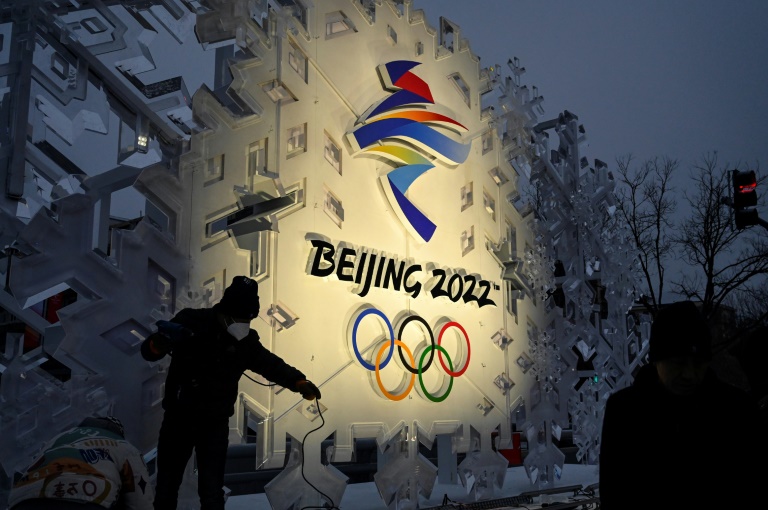Climate change is threatening the future of the Winter Olympics, reducing the number of suitable venues for the event around the globe, a report warned ahead of the Beijing Games.
The Olympics in China, which start on February 4, will be the first Winter Games to rely almost 100 percent on artificial snow, according to the study.
“Slippery Slopes: How Climate Change is Threatening the Winter Olympics”, was produced by the Sport Ecology Group at Britain’s Loughborough University and the Protect Our Winters campaign group.
It says more than 100 snow generators and 300 snow-making guns are working flat out to cover the ski slopes of the 2022 Winter Olympics in artificial snow.
The authors say it is an energy and water-intensive process frequently using chemicals to slow melt, but also delivers a surface that many competitors say is unpredictable and potentially dangerous.
“The risk is clear — man-made warming is threatening the long-term future of winter sports,” the report says. “It is also reducing the number of climatically suitable host venues for the Winter Olympiad.”
“The 2022 Winter Olympics will, no doubt, be an awesome spectacle –- watched and enjoyed by millions worldwide,” it adds.
“But they should also provoke a debate about the future of snow sports, and the limits of engineering artificial natural environments. Slippery slopes lie ahead.”
Of the 21 venues used for the Winter Games since Chamonix 1924, scientists believe that by 2050 only 10 will have the “climate suitability” and natural snowfall levels to host an event.
Chamonix is now rated “high risk” along with venues in Norway, France and Austria, while Vancouver, Sochi and Squaw Valley in the United States are deemed “unreliable”.
British freestyle skier Laura Donaldson, who competed at the Salt Lake Games in 2002, warned in the report of the dangers to athletes.
“If freestyle super pipes are formed from snowmaking machines in a poor (natural snow) season, the walls of the pipe are solid, vertical ice and the pipe floor is solid ice,” she said.
“This is dangerous for athletes — some have died.”
Two-time Canadian Olympian Philippe Marquis raised concerns about the increase in injuries caused by the lack of practice on snow and voiced environmental fears.
“Athletes feel the urge to push their limits even if the conditions are suboptimal,” said the freestyle skier.
“The conditions are definitely more dangerous than what we’ve seen before.”
Former British Olympic snowboarder Lesley McKenna added: “I have cherished the last three decades in snow sports. But I harbour mounting fears for where we could be in another 30 years’ time.”









